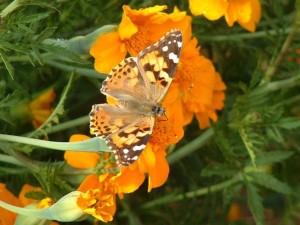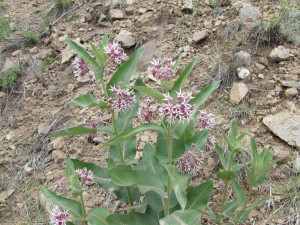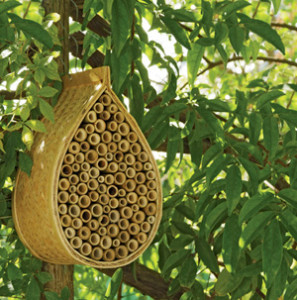Once upon a time there was a little golden haired girl named Deanna. Upon returning home from a 3 day trip with her parents, she noticed a fuzzy little bee lying on a rug in her bedroom. The bee was still alive but could barely move. “Oh no” thought the little girl. “The poor little bee must have been without food and water. Everyone needs food and water.” Knowing how much the bees loved the wildflowers she carefully picked up the rug and carried it outside. Luckily the dandelions were in bloom and plentiful in her yard so she picked a flower and laid it beside the ailing bee. Slowly the bee climbed up onto the dandelion flower, nestled in and drank the nectar. Within just a short while the bee was recharged and flew away back to the hive to do what bees do. This made the little girl very happy as she loves honey and she knew without the bees there wouldn’t be any. The little golden haired girl and the little golden flower saved a life that day. Yes Deanna, the bees do give us delicious golden honey but few people know they are responsible for one in three bites of food we eat.
With the local news reporting that Colorado beekeepers lost 38% of bee colonies last year alone and several organizations declaring beekeepers across America lost 42.1% of their bees just since April 2014, I agree that this seems to be a battle the beekeepers can’t win. These figures are startling to say the least. For far too long we have been twiddling our thumbs over this issue with the idea that the decline in numbers and bee colony collapse are a mystery.
There is no mystery to me. Studies by the center for disease control show that all of us carry pesticides in our bodies. We now know that the wide use of pesticides are considered the leading cause of the bees decline. In the late ‘90’s when systemic pesticides started being used on food crops, Colony Collapse Disorder began occurring shortly afterward. These chemicals incorporate within the plant itself and can be expressed in the leaves or in the pollen & nectar when the plant blooms. Older chemicals were sprayed onto the plant and short lived. Fed through irrigation and other means, systemics stay the entire life of the plant. These pesticides lower the immune making bees susceptible to disease, they disrupt digestion, impair navigational abilities and subtly harm the brain. If a honey bee becomes confused and disoriented, it cannot live much more than 24 hours away from its hive. Award winning documentary, The Vanishing of The Bees gives a more detailed explanation of how systemic pesticides play a role in this disaster. Modern agricultural methods have also contributed.
I would also introduce the notion that just as fast as bees are being killed with pesticides, so are the plants that sustain them. Many of the wildflowers the bees depend on are considered “noxious weeds” by the state of Colorado. These so called weeds are sprayed every year with deadly chemicals. So if they do manage to escape death by pesticide which would be hard to do since Atrazine, a pesticide known to disrupt endocrine function is found in 94% of U.S. drinking water, (according to the USDA;) there’s not much to keep them going in the way of nutrition. Some of the flowers the bees depend on are touted as the worst weeds out there. Dandelion, thistle, mullein and the infamous toadflax to name a few.
Although multi-factorial, consider the decline of the Monarch Butterfly as well.
 Many of the wildflowers considered weeds provide nutrition to the Monarch but one plant in particular provides more than just nutrition; the milkweed plant. As its name implies, not only is it considered a noxious weed by the state of Colorado, it is also listed as poisonous. When the Monarch ingests the juice from the milkweed it becomes poisonous to predators serving the endangered butterfly two-fold. In addition, the Monarchs larvae appear to feed exclusively on the milkweed plant of various species. Milkweed grows in sandy disturbed soils, typically by roadsides which makes it especially vulnerable to chemical spraying in Colorado.
Many of the wildflowers considered weeds provide nutrition to the Monarch but one plant in particular provides more than just nutrition; the milkweed plant. As its name implies, not only is it considered a noxious weed by the state of Colorado, it is also listed as poisonous. When the Monarch ingests the juice from the milkweed it becomes poisonous to predators serving the endangered butterfly two-fold. In addition, the Monarchs larvae appear to feed exclusively on the milkweed plant of various species. Milkweed grows in sandy disturbed soils, typically by roadsides which makes it especially vulnerable to chemical spraying in Colorado.
The Native Americans used milkweed as food and medicine and considered it a highly useful plant. The young shoots when properly prepared taste somewhat like asparagus. The young shoots, unopened flower buds and immature seed pods can be eaten raw, boiled, or fried in oil. It can be added to soups or stews and used to thicken broth as well as tenderize meat. The leaves can be rolled and baked in salsa. Milkweed has the nutritional might of broccoli or cauliflower.
Per Linda Runyon, an herbalist who homesteaded in the deep woods for many years, “gathering milkweed is by far the easiest way to find food for my family.” The stalks can be peeled and used as strong fiber or fishing lines. The sap from the stem when applied topically will remove a wart in a matter of days. It is advised not to ingest the bitter sap. If too much of the plant is ingested it can cause nausea, the first sign that you’ve had enough. The same is true of many of the food and medicines you find in the grocery store for that matter. I personally haven’t used this plant as food but many of my teachers have with not a single one keeling over in agony. Although the plant is edible and useful, leave it for the sake of the butterflies and bees to contribute to their ongoing survival.
What’s being done?
In February 2015, The U.S Fish and Wildlife service announced a campaign to save the Monarch butterflies. Per Service Director Dan Ashe “We can save the monarch butterfly in North America, but only if we act quickly and together, and that is why we are excited to be working with the National Wildlife Federation and National Fish and Wildlife Foundation to engage Americans everywhere, from schools and community groups to corporations and governments, in protecting and restoring habitat. Together we can create oases for monarchs in communities across the country.”
See more here: http://www.fws.gov/news/ShowNews.cfm?ID=6F984BBC-D85B-FEE8-4C58EF75037F8B59
The White House Pollinator Health Task Force (WHTF) has also just released its strategy to address the threats to bees, monarchs and other pollinators. While they feel they have developed positive, far reaching goals for honey bees, monarch butterflies and other pollinators, unfortunately their plan ignores several common sense solutions and calls for more bureaucracy in the way of researching the “possible” effects of pesticides. With rapidly disappearing populations, I’m pretty sure we are seeing the results in numbers and need no further research in that respect. To make your voices heard go to:
http://salsa3.salsalabs.com/o/1881/p/dia/action3/common/public/?action_KEY=16790
Sign the petition calling for stronger measures. The actions taken by this committee are far too little and way too late. In the year 1996 Monarch’s numbered in the billions. Today that number has dwindled by 90%. Although we don’t consider butterflies pests, they are insects after all and not exempt from pesticide.
What else can we do?
*Cut or mow the weeds growing by your roadside and contact your local conservation department to request to be added to the no spray list to prevent chemicals from leaching onto your property. The contact information for Teller and Park Counties is:
Mary Menz-District manager
Teller-Park Conservation District
(719) 686-9405 ext 104
(719) 686-9403 FAX
Office hours: Tuesdays & Thursdays 8:00 am to 4:00 pm
Per Mary, “There is also a Registry of Pesticide Sensitive Persons for the State of Colorado. There are no persons listed in Teller or Park County, but it’s an option for people. It’s published annually by the Colorado Department of Agriculture.”
*Plant butterfly gardens and STOP using pesticides! Many local garden centers and feed stores carry specific blends of seeds to plant a butterfly garden. Be sure to include milkweed! Get free milkweed seeds here: https://www.livemonarch.com/free-milkweed-seeds.htm
Go to the Natural Resources Defense Council’s website and sign their petition against Dow chemical’s newest toxic herbicide, Enlist Duo. NRDC’s Mission: NRDC works to safeguard the earth—its people, its plants and animals, and the natural systems on which all life depends.
*Petition to get harmful pesticides out of your local hardware stores, garden centers and feed stores.
*Make your yard and garden safe for the butterflies and bees. For a $50.00 donation, Friends of the Earth will send you this beautiful bamboo bee house designed to attract mason bees which are non-stinging pollinators.
For more detail, see: https://earthhq.foe.org/
*For more ideas on how you can help see: http://wearechange.org/bee-population-has-declined-40-60-heres-how-to-revive-it.
Let’s make every effort to join together with our beekeepers in the fight for the future of our pollinators before we find ourselves scratching our heads asking, where have all the flowers gone? “Never doubt that a small group of thoughtful, committed citizens can change the world; indeed, it’s the only thing that ever has.” ~Margaret Mead
Mari Marques is a Certified Herbalist and owner of The Thymekeeper. For questions or more information contact: Mari at mugsyspad@aol.com or 719-439-7303. Mari is available for private consultation or to meet with you and see what’s blooming on your property in June, July and August.


Leave a Reply